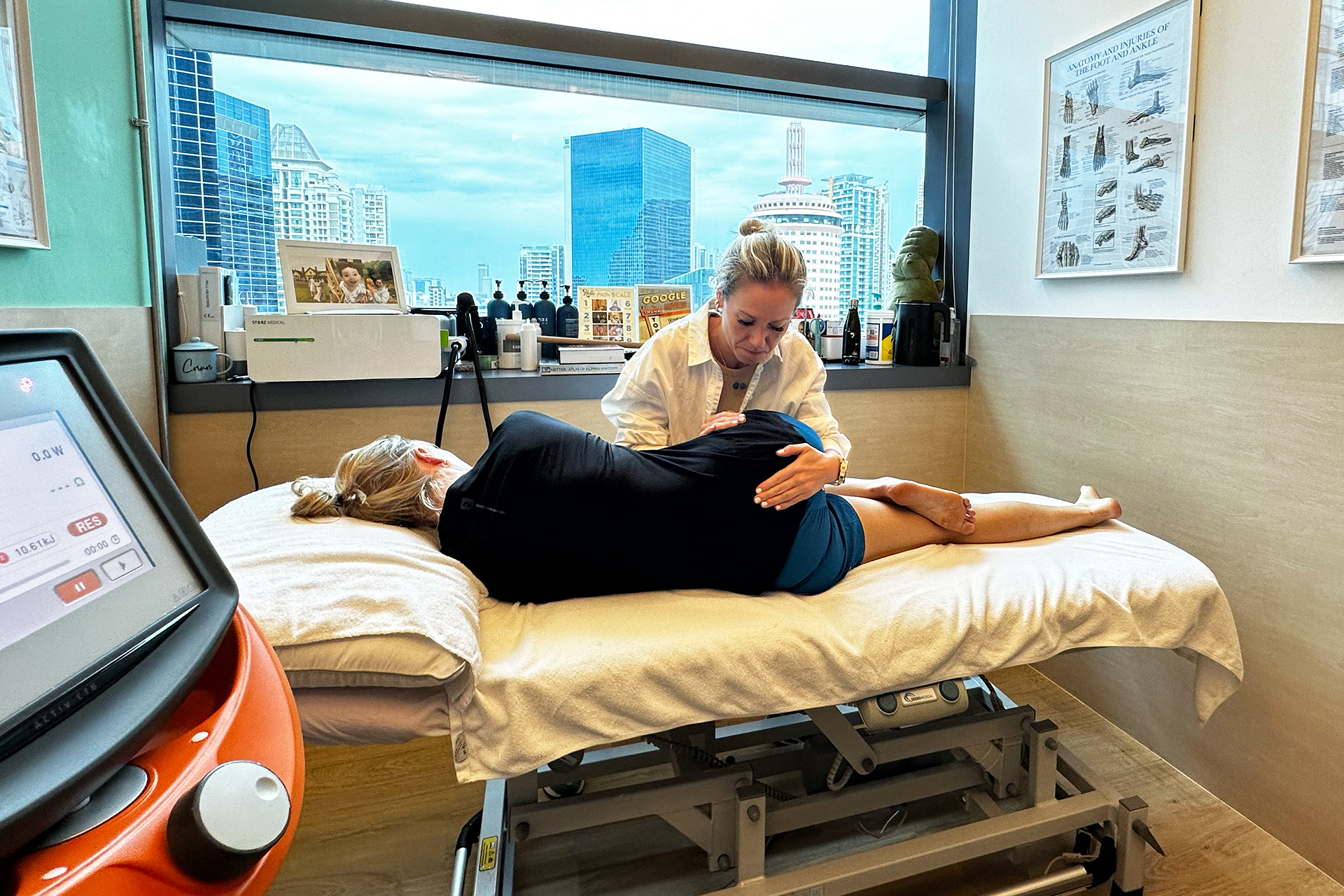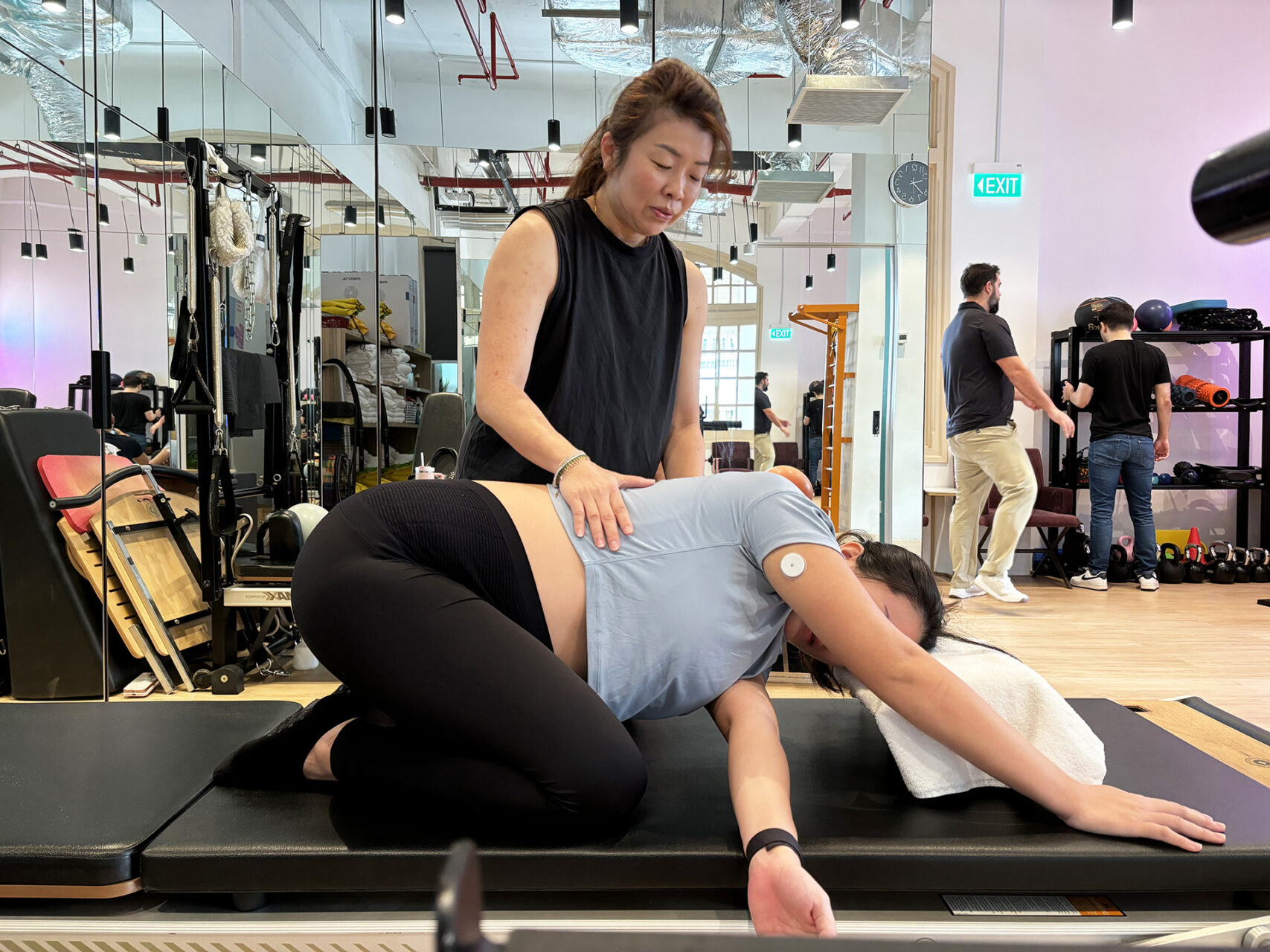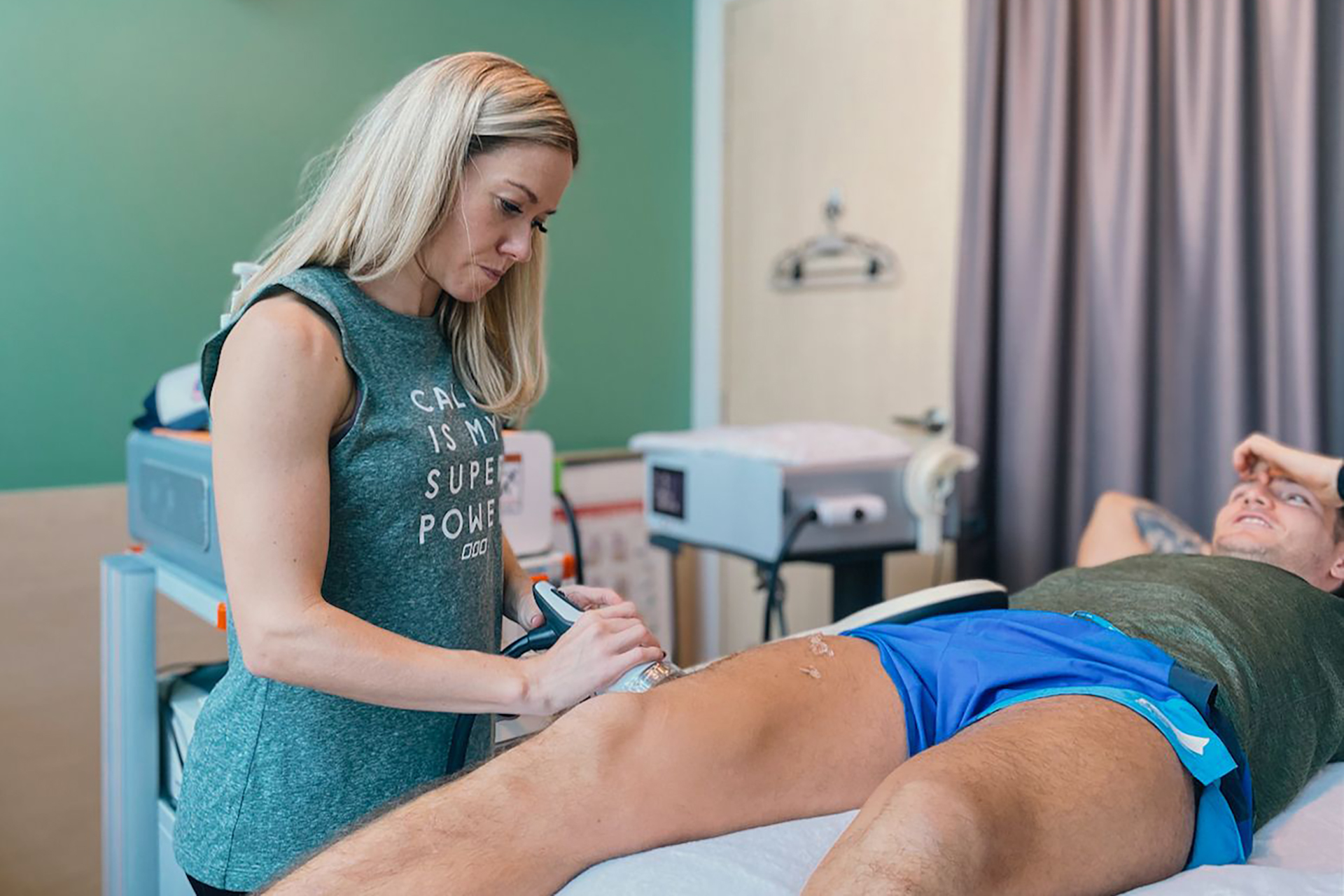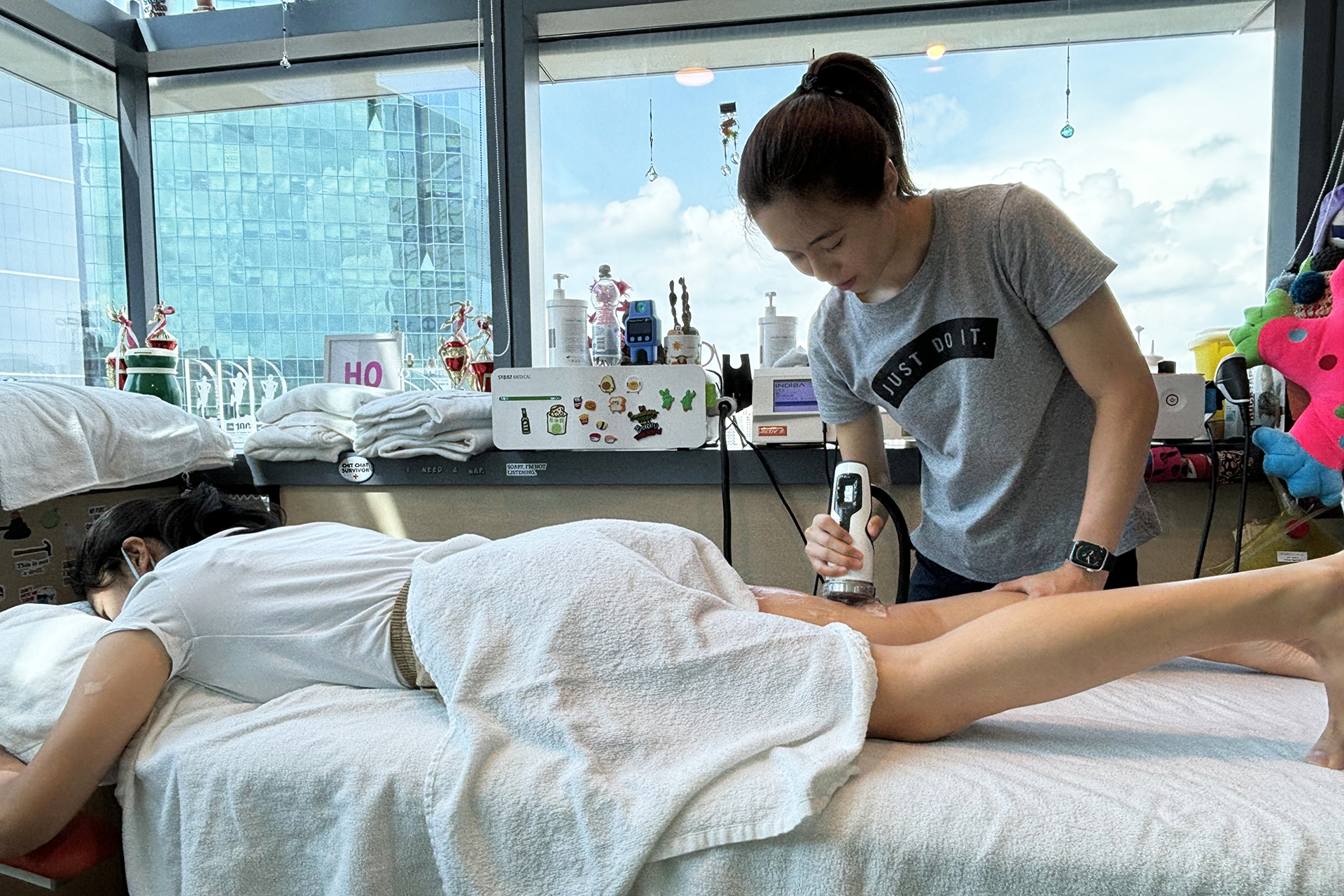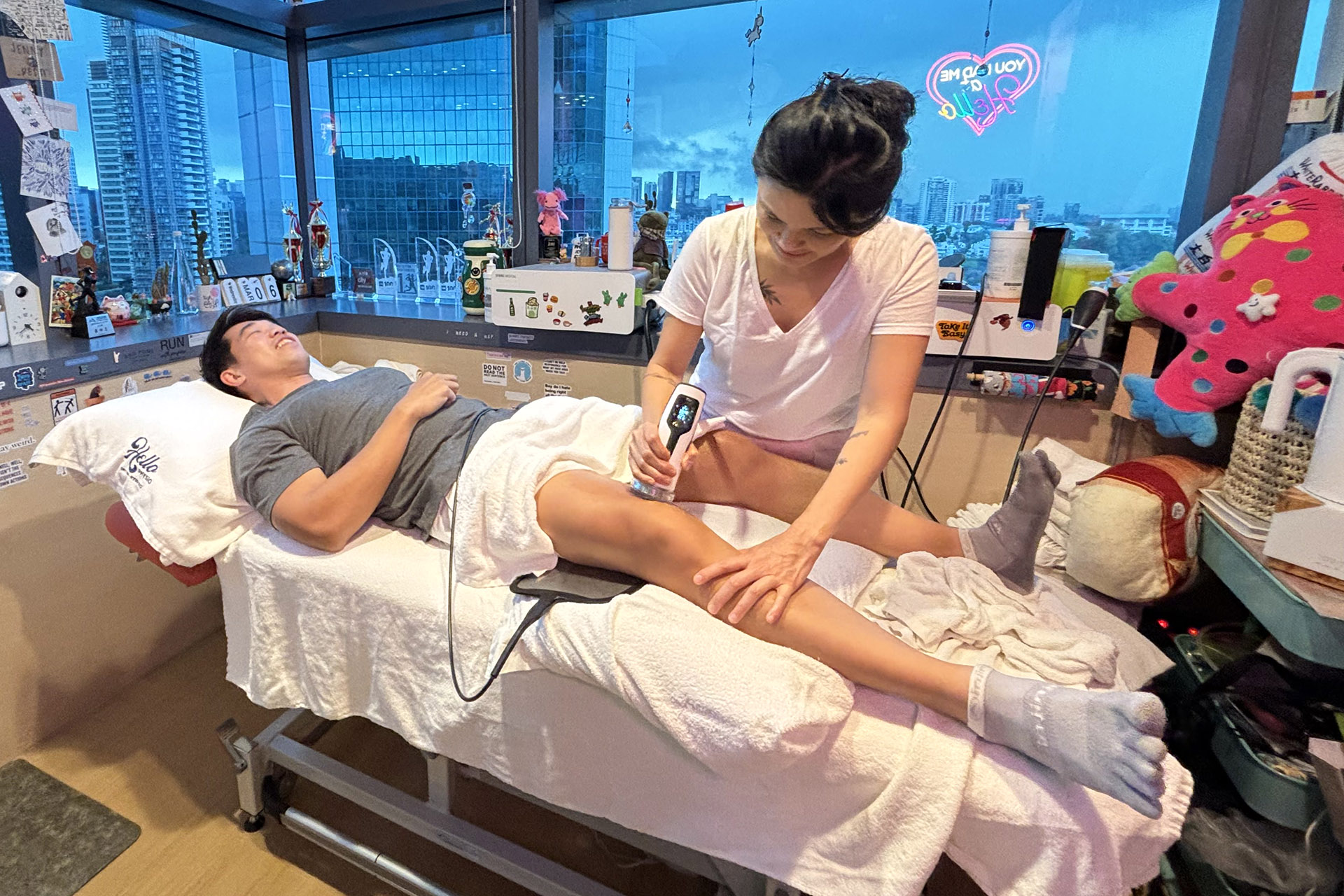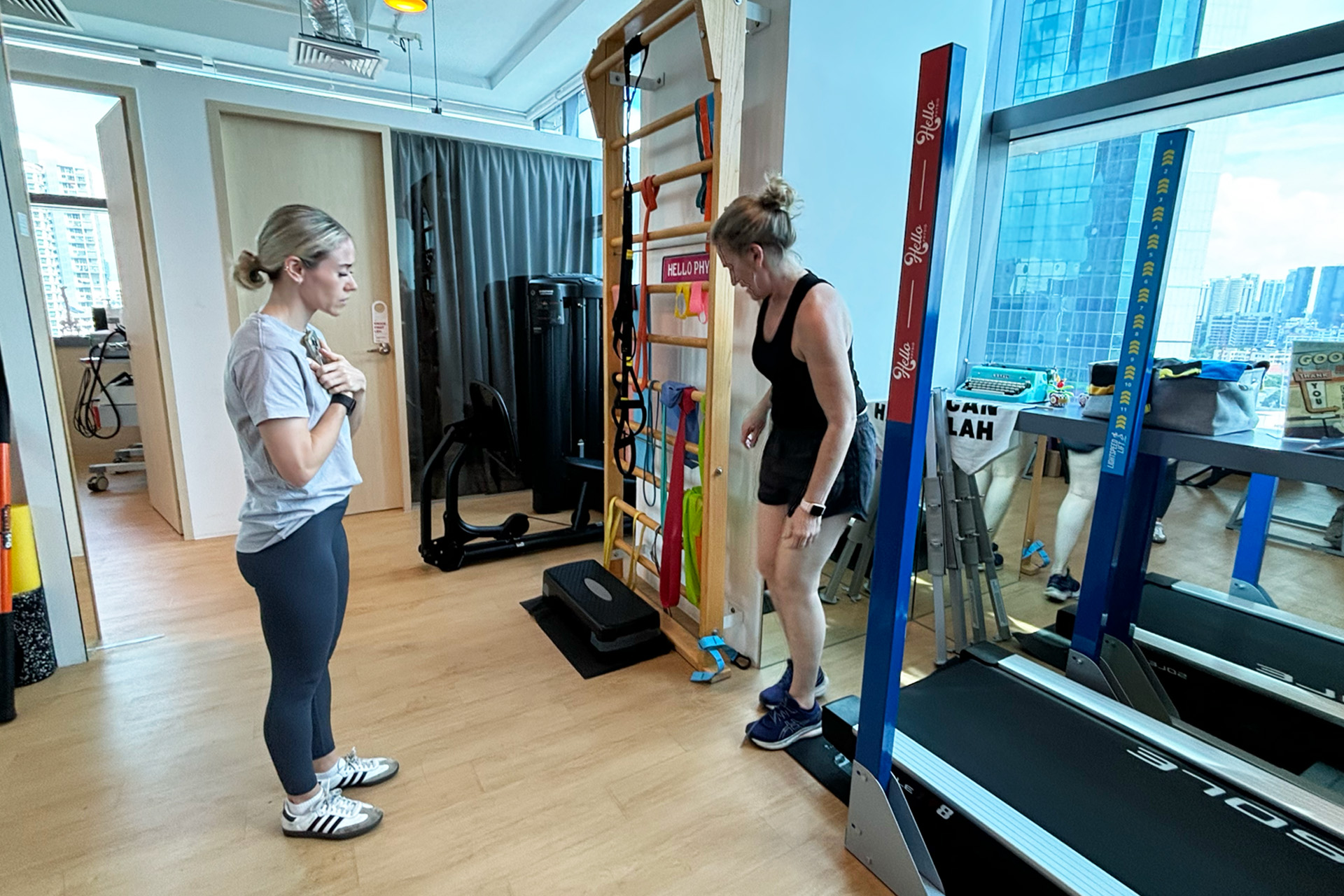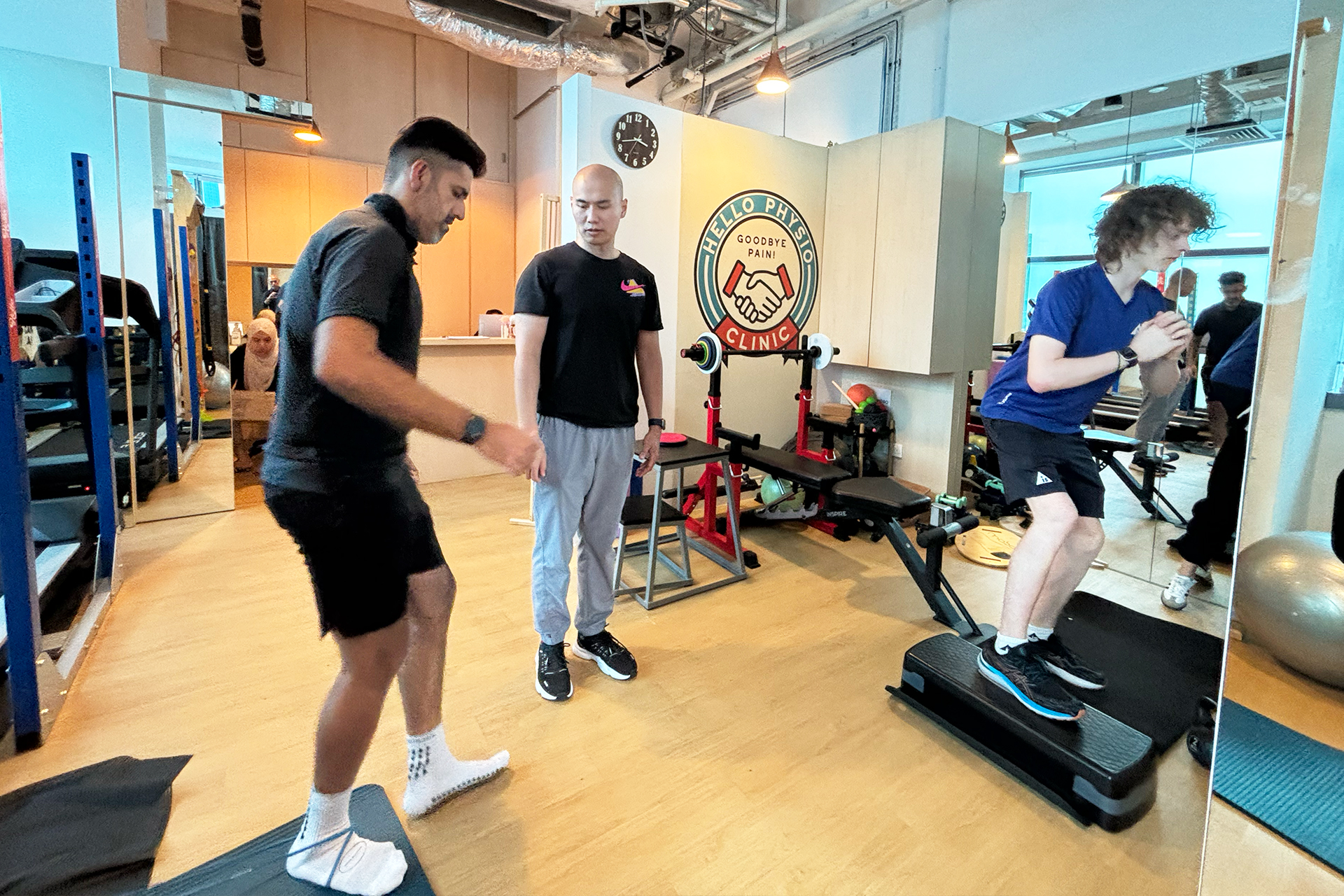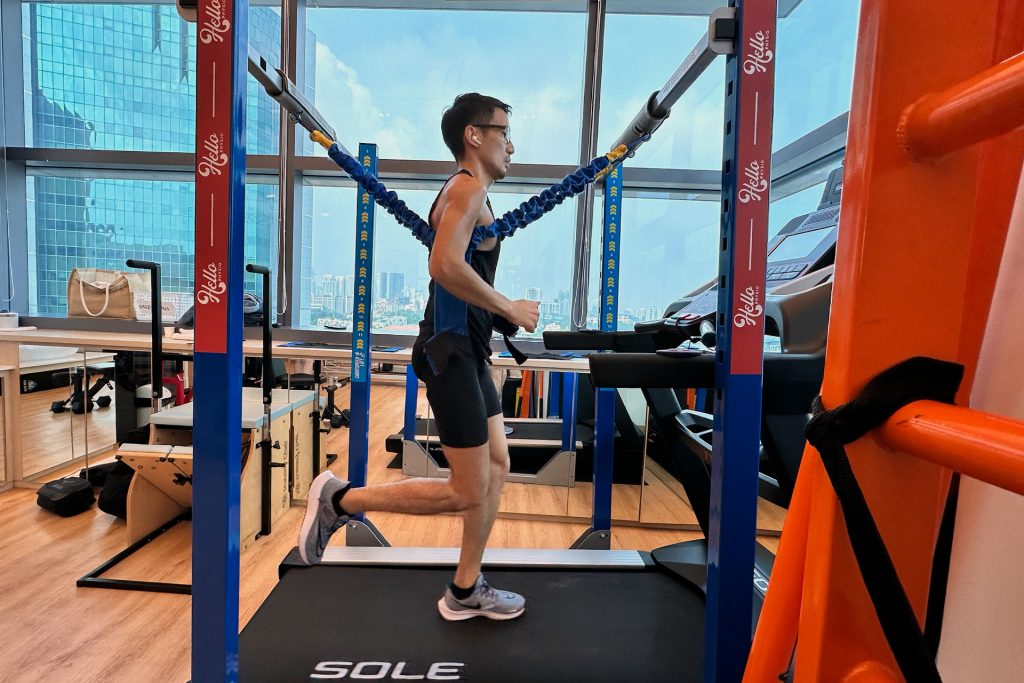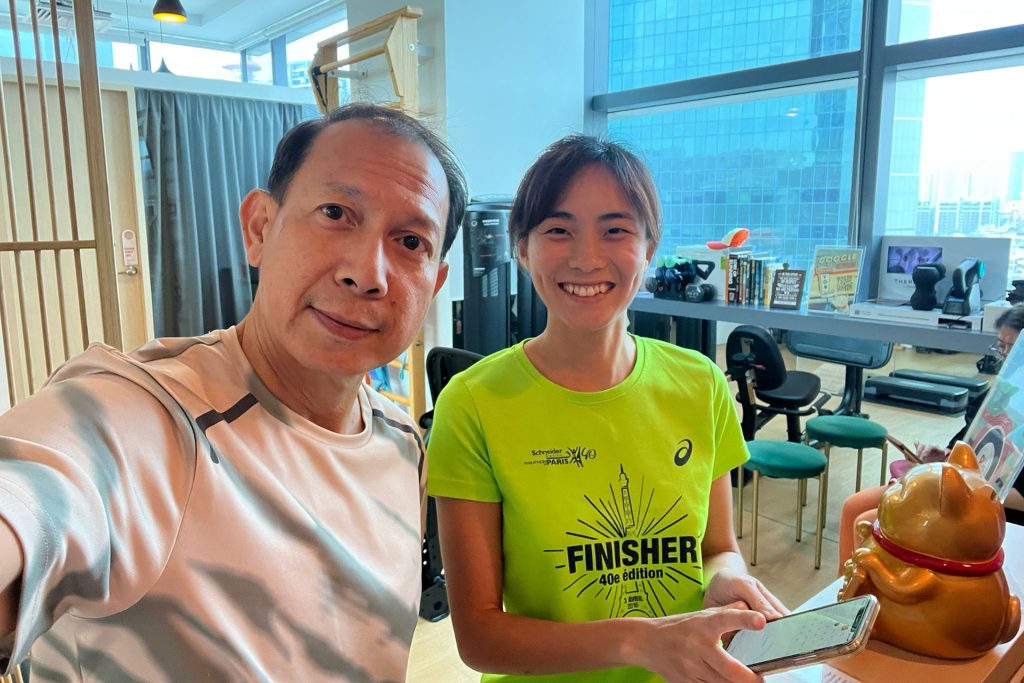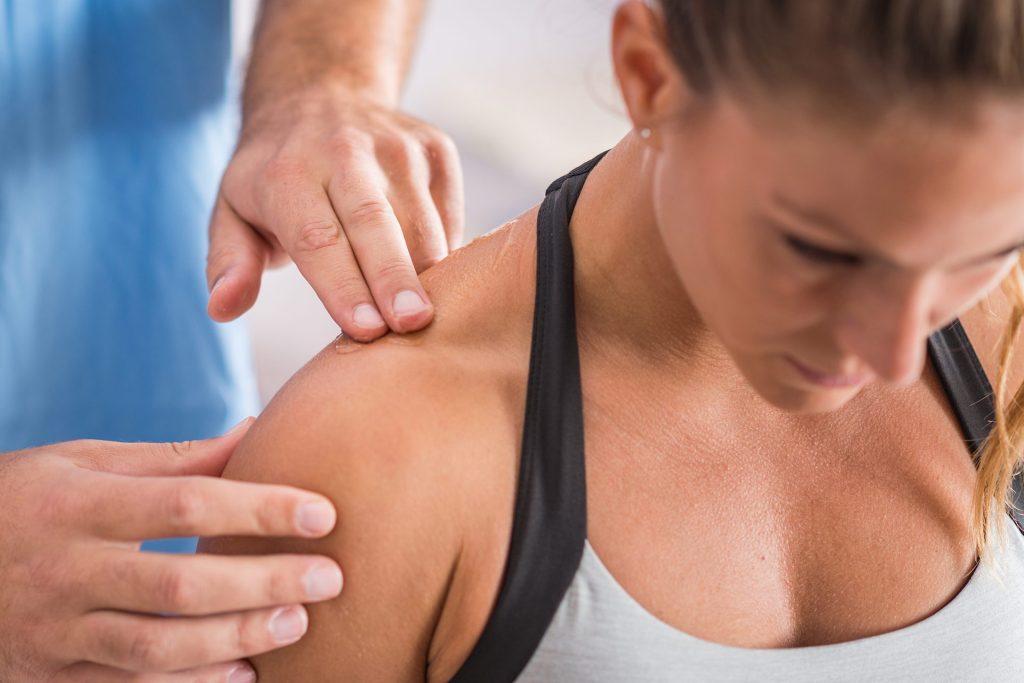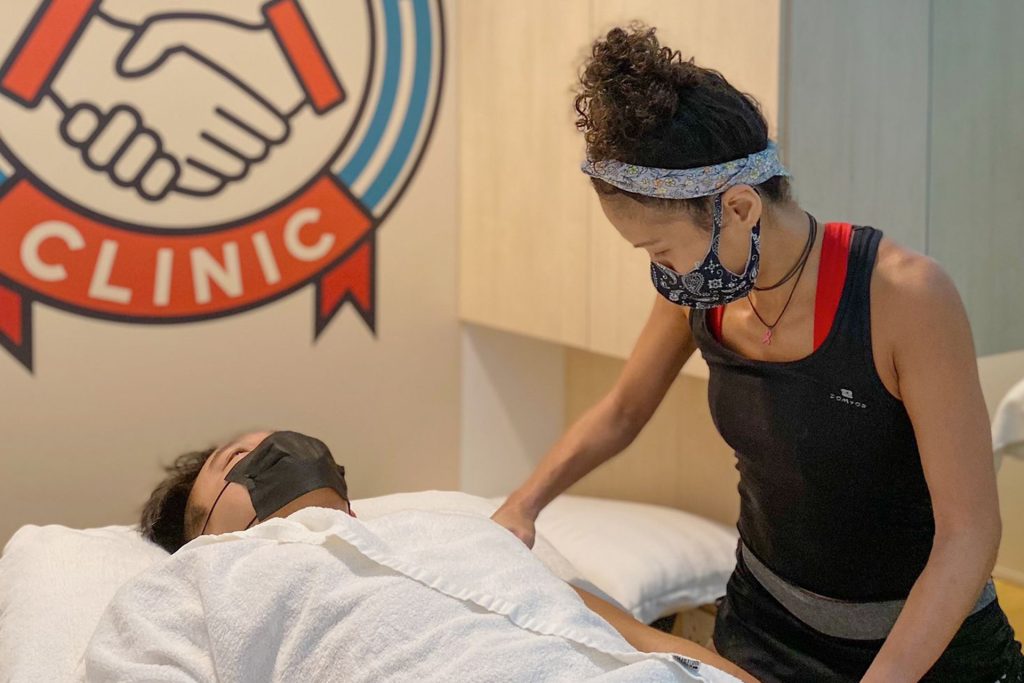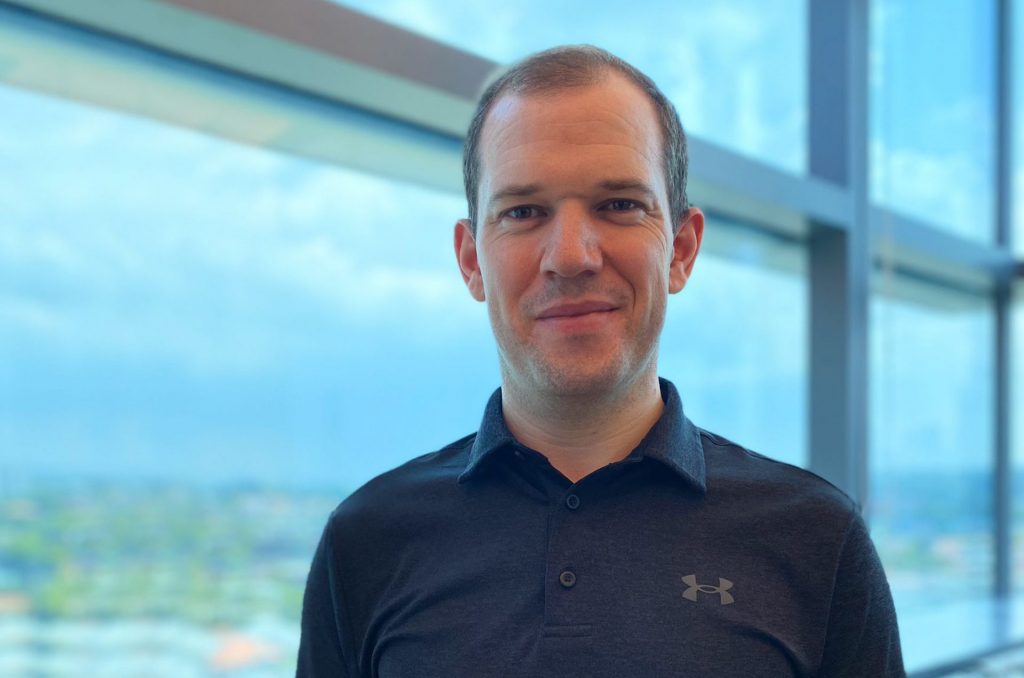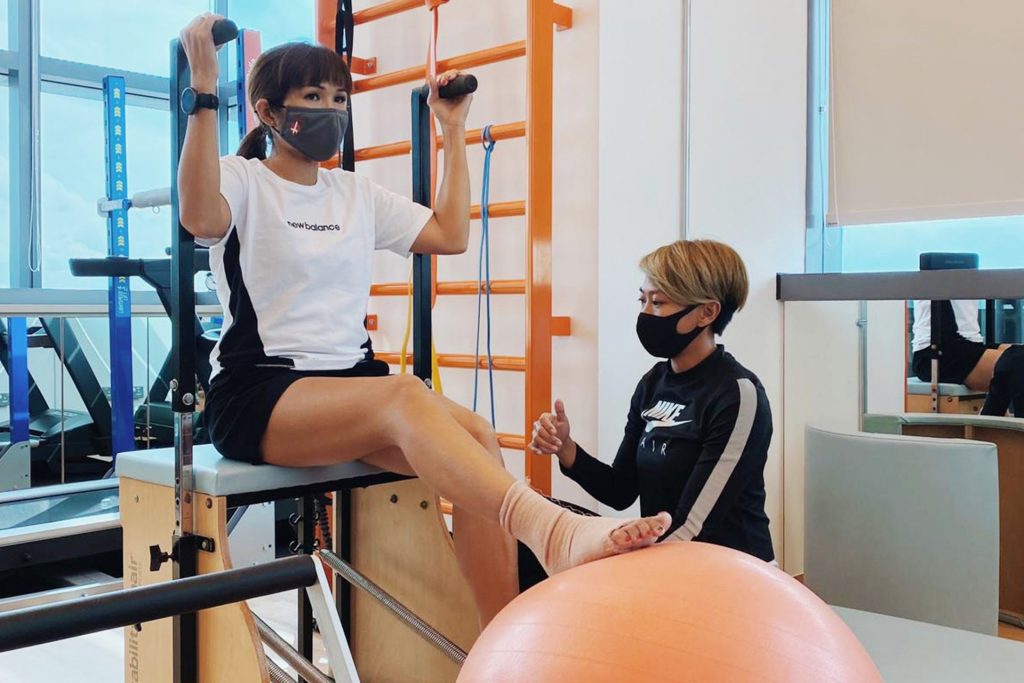Benefits of Post-Operative Physiotherapy for Rehabilitation
Many milestones mark the journey to full recovery following surgery, each significant in restoring physical function and well-being. Post-operative physiotherapy isn’t just an extension of general physiotherapy, aiming to alleviate immediate pain and discomfort. Yes, alleviating discomfort and managing post-op pain is vital, but it is the tip of the iceberg.
The benefits of this post-operative physiotherapy for rehabilitation are numerous — from accelerated healing to mitigating the risks of future complications. It is targeted and patient-specific, designed to alleviate immediate post-operative discomfort and lay a foundation for long-term health and functionality.
Post-op physiotherapy at HelloPhysio looks to accelerate the healing process by activating the body’s natural healing responses. Through adjunctive modalities, prescribed exercises and manual therapies, our treatments work to ensure that tissues heal properly and function is restored optimally.
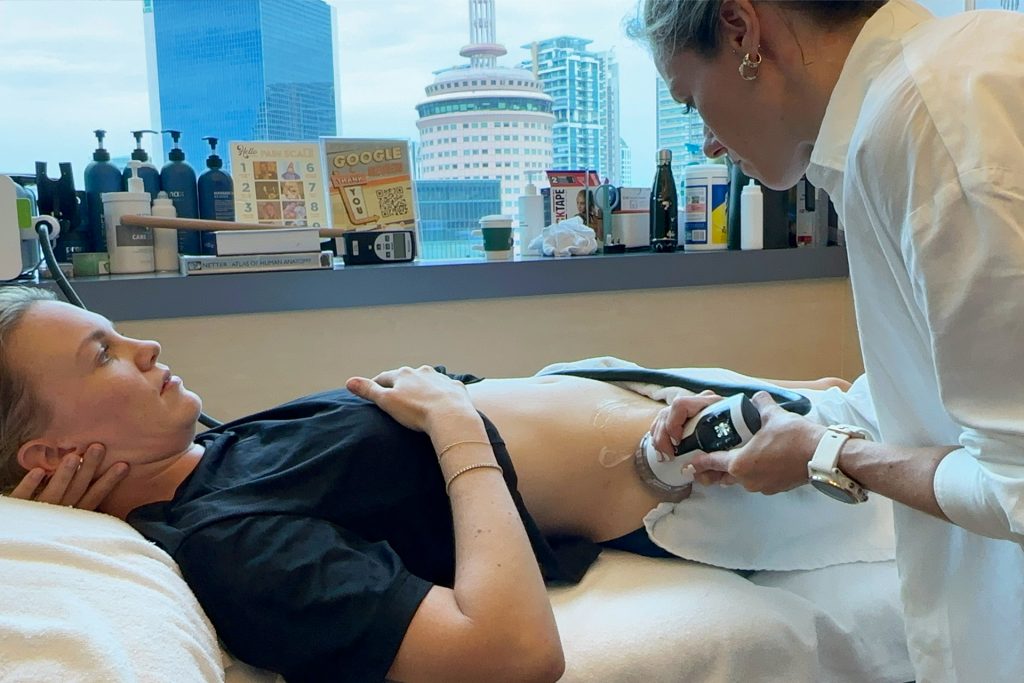
But there’s more. Post-operative physiotherapy plays a crucial role in mitigating the risks of future complications. Whether preventing joint stiffness after an orthopedic procedure or reducing the risk of lung complications after thoracic surgery through targeted breathing exercises, this approach acts as a preventive shield.
Post-operative rehabilitation is a journey toward swift physio recovery, guided by our senior team of physical, alternative, and rehab therapists’ expertise. Our integrated rehab team doesn’t merely instruct our patients but educates them, allowing patients to become active participants in their healing process. This engagement fosters physical recovery and emotional well-being, instilling confidence and a sense of control.
In essence, post-operative physiotherapy is a dynamic, multifaceted approach.
Post-operative physiotherapy transcends the simplistic notion of rehabilitation, shifting to a patient empowerment strategy encompassing physical healing, prevention with restoration, and meeting immediate needs with long-term goals. It’s a collaboration between medical professionals and patients, a nuanced dance that leads to a harmonious and resilient return to normalcy when performed with precision and care.
Your post-surgical journey is a gradual and structured process; it unfolds in different stages, each contributing uniquely to the healing and recovery of the patient.
Every phase has specific objectives and modalities, from pre-operative preparation to immediate interventions after surgery and extended care for long-term rehabilitation. This multi-stage approach is scientifically informed, evidence-based, and inherently compassionate, considering the patient’s unique medical condition, psychological readiness, and overall lifestyle.
Pre-Operative Physiotherapy Management or Prehabilitation
Pre-operative physiotherapy management, or prehabilitation, is a crucial yet frequently overlooked stage in the surgical journey. By assessing and preparing the body before surgery, physiotherapy sets the stage for better outcomes post-surgery and acts as a critical early step towards successful rehabilitation.
Prehabilitation begins with a comprehensive assessment of the patient’s physical condition. This assessment focuses on the area to be operated on and looks at overall strength, flexibility, and functional abilities. By understanding the patient’s unique physiological profile, our physical therapists, in consultation with your surgical team, craft a personalized pre-surgical program to enhance your body’s readiness for surgery.
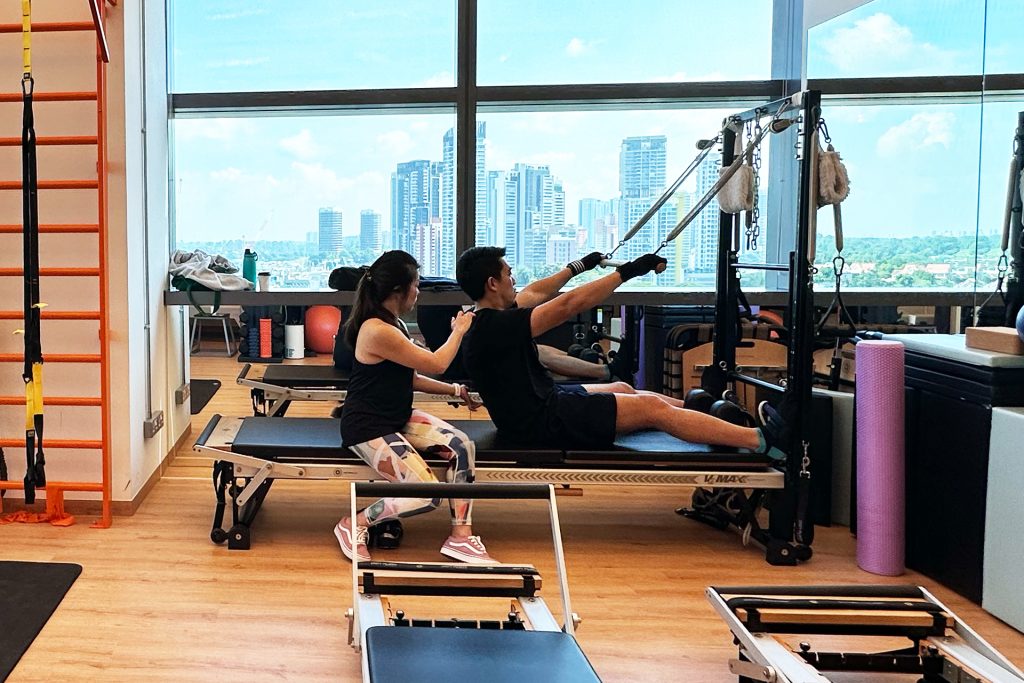
The interventions during this stage can vary widely based on the type of surgery and the patient’s specific needs. It might include physiotherapy post-op exercises to strengthen muscles around a joint due for replacement, respiratory techniques for those facing lung or heart surgeries, or even general conditioning to boost overall health and stamina. These interventions are more than physical preparations; they also educate the patient about what to expect after surgery, mentally equipping them for the journey ahead.
Prehabilitation aims to prime the body, ensuring a stronger foundation for physiotherapy recovery after the operation. This isn’t about getting a patient “fit” in a conventional sense. It’s about creating an optimal physiological environment for healing, reducing potential complications, and enhancing patient outcomes. It’s about entering the operating room not as a passive recipient of medical intervention but as an active, prepared participant in a difficult healing process.
Immediate Rehabilitation after Surgery: The First Steps on the Path to Recovery
Post-operative rehabilitation and physiotherapy is a pivotal phase that bridges the transition from the operating room to the early stages of physio recovery. Once the surgical procedure is complete, patients may find themselves in unfamiliar territory, where even simple tasks can become arduous.
At this delicate juncture, considerations for post-op patients and physiotherapy depend on the goals discussed by your surgeon and our physiotherapist to set the stage to restore essential mobility and manage immediate pain.
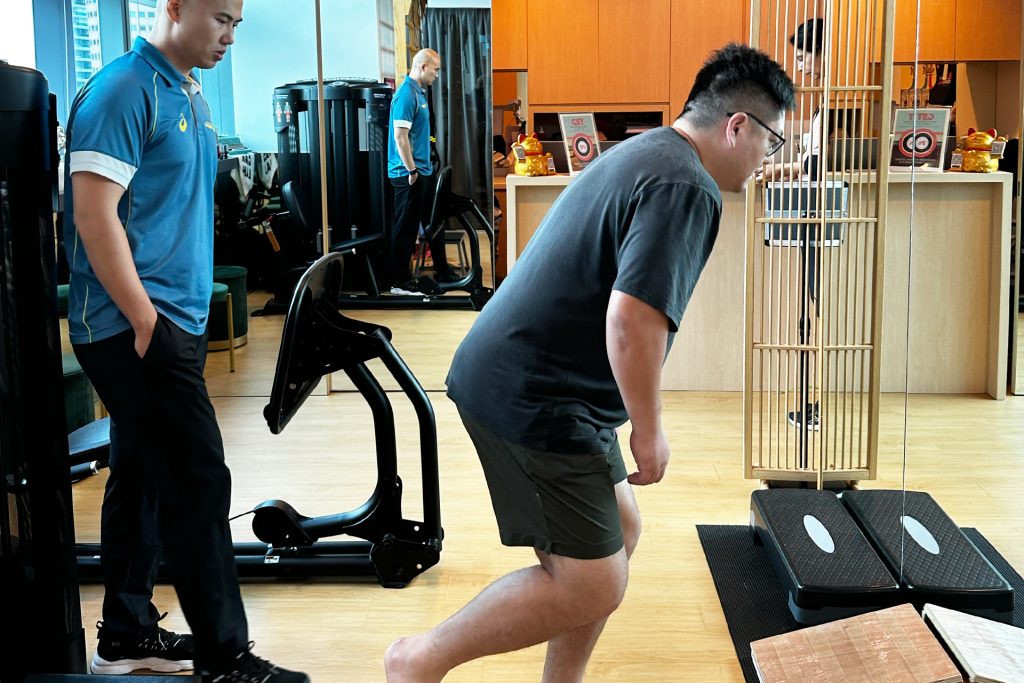
The goals during this nascent stage of recovery are focused but fundamental. They are not about reaching pre-surgery levels of function but rather about stabilizing the patient, minimising discomfort and regaining basic movement. Whether it’s helping a patient take their first post-surgery steps or guiding them through gentle physiotherapy post-op exercises to prevent stiffness, the interventions are tailored to be achievable and therapeutic.
Short-term rehab includes techniques such as gentle mobilization, adjunctive technologies, controlled muscle control, and specific exercises focusing on the affected area. For instance, after joint replacement surgery, the early focus might be on maintaining joint flexibility, or our postnatal Clinical Pilates may be helpful for mothers who experience diastasis recti abdominal separation after childbirth.
Read related article
Recover from Diastasis Recti with Postnatal Pilates
Pain management, too, is a crucial component at this stage, and physiotherapy offers non-pharmacological methods such as Shockwave Therapy, Red Light Therapy, lymphatic drainage massage, and dry needling to help control discomfort.
Education plays a key role here, as well. Patients may need to relearn how to safely perform daily tasks, like getting in and out of bed, using the bathroom, or basic grooming. This empowerment is as much about physical recovery as it is about instilling confidence, regaining independence and having them understand that what they’re going through is normal.
These initial steps lay the groundwork for what’s to come. They’re a gentle beginning to a journey that will gradually increase in intensity. Much like the foundation of a building, the quality and care invested in short-term rehab after surgery set the tone for the entire rehabilitation process.
By giving attention to these early days and working closely with a dedicated physiotherapist, patients can set themselves on a path towards recovery and a future of improved well-being and vitality. It’s a phase that reminds us that even the longest journey begins with small, carefully guided steps.
Post-Operative Orthopedic Rehabilitation
The rehabilitation roadmap is slightly different for those undergoing bone and joint surgeries. Orthopedic cases present unique challenges, demanding specialized care and attention. Whether it’s a hip replacement or knee surgery, tailored approaches are crucial for physical rehabilitation.
Post-operative orthopedic rehabilitation is a specialized and nuanced field within the broader spectrum of physiotherapy. Each path to recovery is unique for those undergoing surgeries related to bones, joints, muscles, and ligaments, such as hip replacements, knee surgeries, or spinal procedures. Orthopedic cases present complex and multifaceted challenges, demanding specialized care, attention, and a deep understanding of the body’s musculoskeletal system.
Discover more about:
Musculoskeletal Disorders and Soft Tissue Injuries
The foundation of post-operative rehabilitation and physiotherapy lies in a careful assessment of the patient’s needs, considering the specific type of surgery and the patient’s overall health, age, and lifestyle. From this vantage point, a personalized rehabilitation program is crafted.
What sets orthopedic rehabilitation apart is the integration of various therapeutic modalities, both traditional and cutting-edge.
At HelloPhysio, the approach is not confined to conventional manual therapy alone. Alongside hands-on techniques, we deploy ground-breaking technologies where clinically applicable. These techniques complement manual interventions to enhance the body’s natural healing mechanisms.
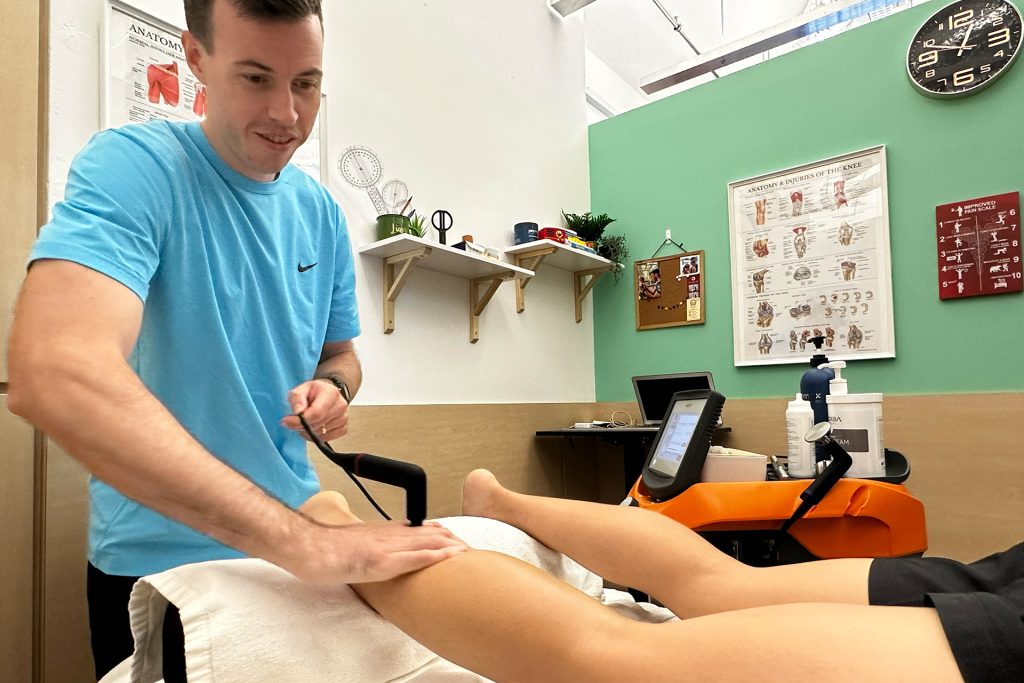
INDIBA® radiofrequency, for instance, has shown promising results in reducing inflammation and accelerating tissue repair. Shockwave Therapy can stimulate bone growth and enhance circulation, which is critical for recovering from fractures or joint replacements. Red Light Therapy, or photobiomodulation, has improved cellular function, while EMTT (Extracorporeal Magnetotransduction Therapy) affects deeper musculoskeletal structures, promoting the regenerative process.
Explore
Post-Surgical Physiotherapy Services
Each of these methods helps quicken the healing process, working in harmony to guide the patient back to optimal function. Moreover, ongoing evaluation ensures that the rehabilitation plan evolves with the patient’s progress, adapting to changing needs and challenges.
Orthopedic rehabilitation is not a one-size-fits-all endeavor. It’s an intricate dance between science and art, tradition and innovation, physiotherapist and patient. In orthopedics, rehabilitation is as much about the strategic use of technologies as it is about the human touch. It’s about listening to the body, understanding its unique needs, and employing the right blend of therapies to propel recovery forward.
The result is not merely a return to normalcy but an opportunity for patients to emerge from their surgical experience with enhanced strength, mobility, and a renewed sense of vitality.
The Long Road To Recovery
Like any journey, rehabilitation has its share of bumps. The anxieties and physical challenges can be daunting, but these hurdles can be overcome with the right mindset and professional guidance. Rehabilitation isn’t devoid of challenges. Patients face a spectrum of trials, from physical discomfort to enduring the mental battle of staying consistent. Yet, these can be surmounted with the proper guidance, mindset, and perhaps a dose of patience.
Each surgical procedure and each body demands its unique rehabilitation plan. With their wealth of knowledge, our physiotherapists develop strategies adapting to the specific surgery and individual needs.
The final phase is an extended care plan, where the focus shifts from mere recovery to regaining full function and preventing future issues. From exercises to enhance joint mobility to tools like mobility aids, this phase is marked by cooperation, communication and commitment between the patient and the therapist.
Read related article
Pilates and Physiotherapy: Natural Complements
The rehabilitation journey, while tailored, often incorporates a mix of exercises, from stretches to strength-building routines. Tools, ranging from resistance bands to mobility aids, become crucial allies. And above all, the triad of patient cooperation, clear communication, and unwavering commitment stands paramount.
Role of the Patient: What You Can Do
Let’s face it: your successful recuperation post-surgery is a shared responsibility. The journey is collaborative. While expert guidance is invaluable, a patient’s proactive involvement is equally crucial. Patients must embrace their role, follow prescribed regimens, and engage actively with their recovery.
Physiotherapy post-surgery is not merely a stage of recovery; it is a continuum of care that ensures the patient returns to their optimal self. Like your favorite shoe for running, it blends science, art and technology to shape your perfect cadence, getting you towards the pace of a solid run.

